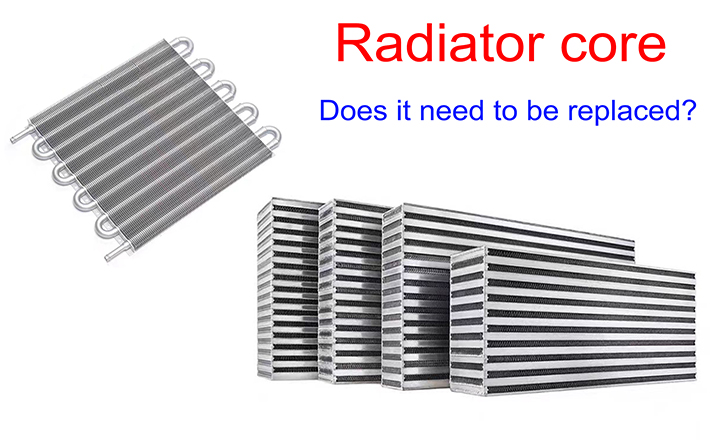How to determine whether the radiator core needs to be replaced in the maintenance of car radiator?
2025-03-24
As the core component of the radiator, the radiator core directly affects the heat dissipation efficiency of the engine. Here are some professional methods to help you determine whether the radiator core needs to be replaced:

Appearance inspection:
Serious deformation or damage: If the radiator core is seriously deformed, dented, cracked, etc., it will affect the flow of coolant and heat dissipation efficiency, and must be replaced.
Large-scale corrosion: Check whether there is large-scale corrosion on the surface of the radiator core, especially the aluminum alloy radiator. Severe corrosion can cause a hole in the radiator core, causing coolant leakage.
Severe lodging or blockage of the heat sink: The lodging or blockage of the heat sink will affect the air flow and reduce the heat dissipation efficiency. If more than 30% of the heat sink is lodged or blocked, it is recommended to replace the heat sink core.
Stress test:
Use a dedicated pressure tester to pressurize the radiator to check for leaks. If the pressure cannot be maintained or there is a significant drop, the radiator core is leaking and needs to be replaced.
Note: During the pressure test, the pressure should be controlled within the rated working pressure range of the radiator to avoid secondary damage.
Internal inspection:
Remove the radiator and check whether there is blockage inside the radiator core. This can be checked using an endoscope or by removing the end cap.
Common blockages include: scale, rust, sludge and so on. If the blockage is serious and cleaning cannot solve the problem, the radiator core needs to be replaced.
Performance test:
Measure coolant temperature: Measure whether the coolant temperature is too high in the normal working state of the engine. If the temperature continues to be high and other factors are excluded, it may be that the heat dissipation efficiency of the radiator core is reduced and needs to be replaced.
Measure the temperature difference between the inlet and outlet of the radiator: under normal circumstances, there should be a certain temperature difference between the inlet and outlet of the radiator. If the temperature difference is too small, it indicates that the heat dissipation effect of the radiator core is not good and needs to be replaced.
Maintenance cost considerations:
If the radiator core is badly damaged and the repair cost is close to or exceeds the cost of replacing the new radiator core, it is recommended to replace it directly.
It should be noted that the above method is for reference only, and the specific judgment needs to be combined with the actual situation and experience. If you are not sure whether you need to replace the radiator core, it is recommended to consult a professional repairman.
Summary
To determine whether the car radiator core needs to be replaced, it is necessary to consider factors such as appearance, pressure, internal condition, performance and maintenance cost. Through careful inspection and testing, the state of the radiator core can be accurately judged, and replaced in time to ensure the normal operation of the engine and driving safety. Regular maintenance and maintenance of the radiator can effectively extend its service life and avoid unnecessary repair and replacement.